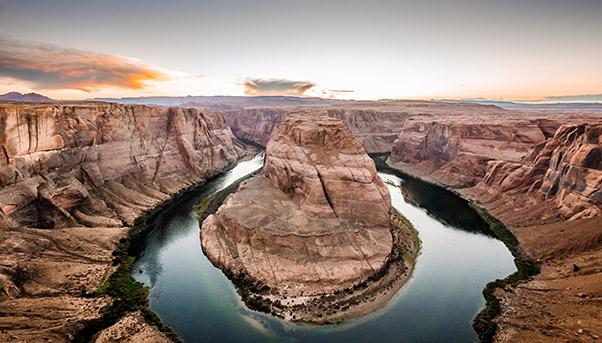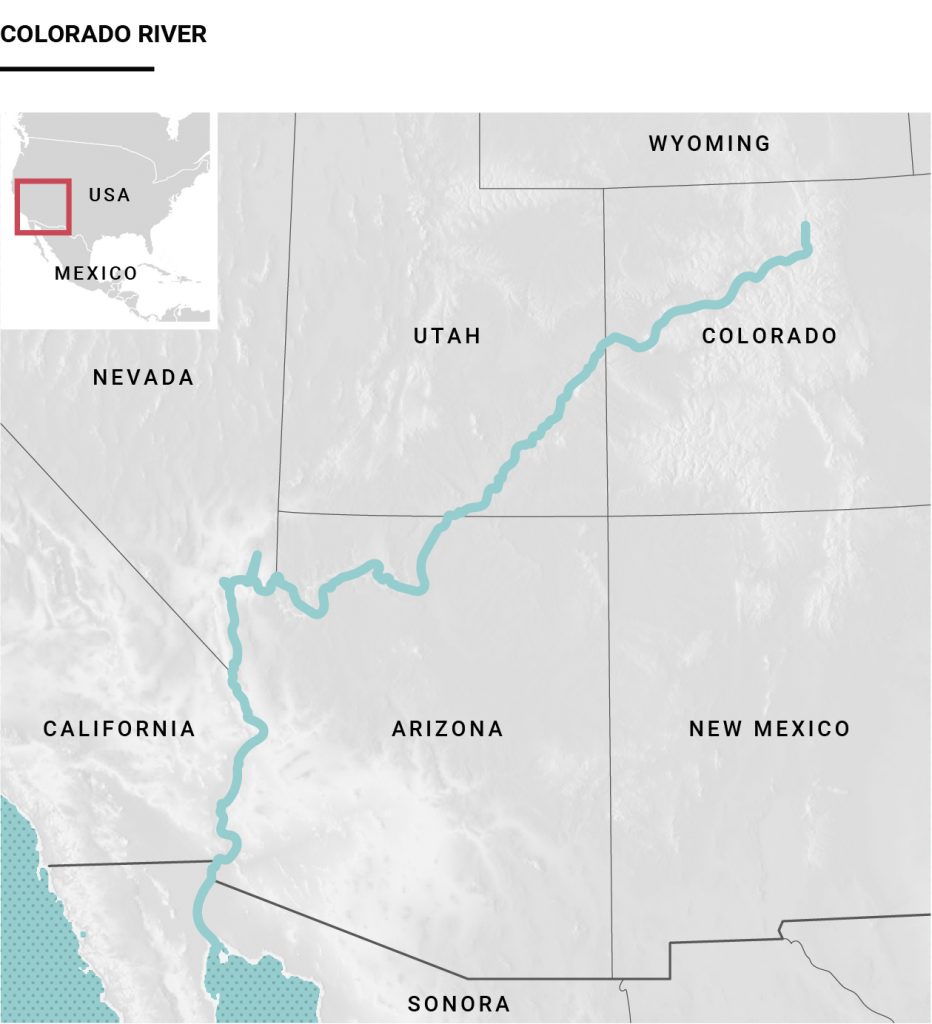
Flowing for more than 2,000 kilometres through seven states from the Rocky Mountains south to the Mexican border, the Colorado River is one of the most important of the southwest United States. But it is losing its grandeur. Global warming, urban development and faltering investment in infrastructure is depleting its strength year after year after year.
The level of its waters is so low that experts, public officials, activists and journalists are all raising the alarm.
The latest has come from the Bureau of Reclamation of the U.S. Department of the Interior. As the country’s largest wholesale water supplier and the second largest producer of hydroelectric power, it produces regular forecasts of the state of the river, and the latest one from August 24 says the drought afflicting it has never been so bad.
«This year is one of the driest years in the past 19 years, which is the driest 19-year period in recorded history and one of the driest in the past 1,200 years», it says in a press release announcing the latest forecast.
The bureau cites an increased risk of declining reservoir elevations during the next five years and a 57% likelihood of a shortage in the river’s Lower Basin area.
«There is a real sense of urgency across the basin to protect the river’s supply in the face of increasing demand and ongoing drought», says Reclamation Commissioner Brenda Burman.
ProPublica, the Pulitzer Prize-winning journalism website, has examined the challenges faced by the river, which supplies water and energy to about 40 million people in Wyoming, Colorado, New Mexico, Utah, Nevada, Arizona and California, as well as 15% of the country’s agricultural production.
After more than a century of exploitation, ProPublica has said one of the main problems is outdated plants and distribution networks that do not use the waters of the Colorado River in an efficient manner.
«There is enough water in the West‚ [but] there are all kinds of agriculture efficiencies that have not been put into place», former secretary of the interior and former governor of Arizona Bruce Babitt told the website in one of its many articles on the subject.
Scores of data also show how the river is under stress. Every year, the amount of water used for farming and general use exceeds 1.4 trillion gallons in respect to the physical capacity of the river, an amount considered by many as enough to put at risk its very existence.

Colorado River: a source of water and energy
Having had a series of hydroelectric plants built along its shores throughout the past century, the Colorado River proved crucial for the development of the west as its waters were harnessed to produce electricity.
One of the most famous of these structures is the Hoover Dam, with an annual capacity of four billion kilowatt hours. The dam also created Lake Mead, one of the largest artificial lakes in the country that acts as a reservoir for Nevada, Arizona and California. Another big project was the Big Thompson Project of 1937 that supported agricultural development at the foot of the Rocky Mountains. Some 71.7 billion of gallons of water are diverted from the river for this purpose.
Then there is the Navajo Generation Station. Opened in Arizona in 1974, it burns through 22,000 tonnes of coal every day and produces electricity with the help of the river’s waters. Such is the station’s importance that the federal government shares ownership of it with power utilities in California, Nevada and Arizona.
In all, there are 10 major power and water plants situated along the river that – according to ProPublica – have contributed to the development of the region. But they risk contributing to the depletion of its waters.
The role of agriculture
Agriculture is the biggest user of its waters, however. About 70% of this resource goes to farmers for crops like cotton, which have been supported by the federal government. Since 1995, it has financed agriculture with $3 billion in California alone.
Then there is the urban development. Las Vegas in particular has grown faster than any other city in the west. In the last 25 years, its size has doubled. It is for this reason that the city is at the forefront of water management to guarantee supply of water to the city and the surrounding area. It has a variety of water conservation measures like incentives encouraging residents to replace their grassy lawns with rock and cacti to cut back on sprinkling.
Colorado river water supply to California
California is the wealthiest state and the biggest user of the waters of the Colorado. More than a third of the water taken from the river flows through two aqueducts that supply the state. The California Aqueduct goes to Los Angeles and San Diego, while the All-American Canal carries water from the last part of the river to the Mexican border to feed Imperial County, one of the richest farmlands in the country where fruit and vegetables are shipped across the country.
Although the issue of water conservation may seem regional, it is of national importance. According to the Pacific Institute, a U.S. think tank that specializes in water issues, with their consumption of food produced in California, every U.S. citizen is indirectly responsible for the weekly consumption of 300 gallons of water from the Colorado.
And in light of the fact that California is the fifth largest economic power in the world in terms of gross domestic product, protection of the river is not only an environmental challenge but also a test of the ability of the state and the United States as a whole to develop in a more sustainable way.

